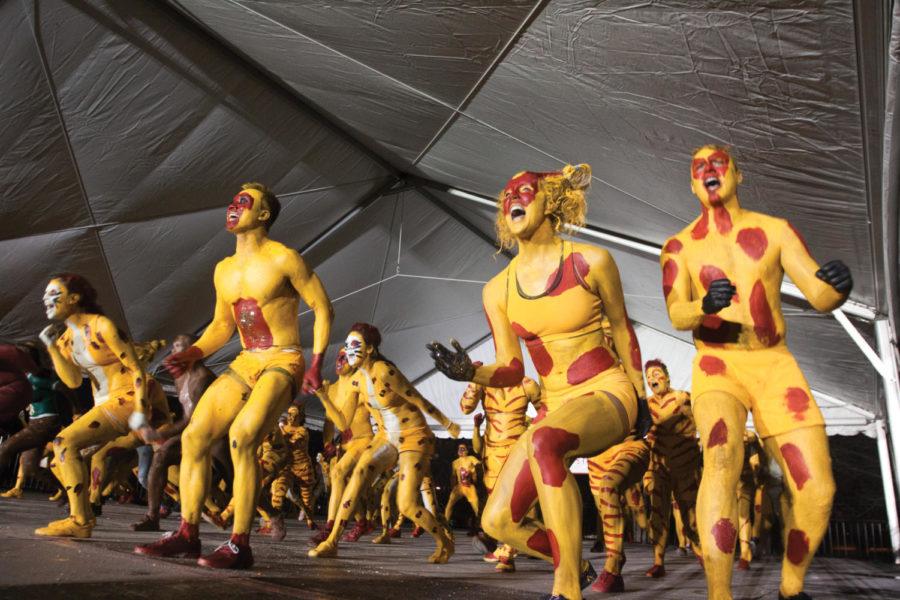Yell Like Hell: Homecoming tradition
Photo: Lindsey Lippincott/Iowa S
On Wednesday, Oct. 24 the Greek communities got together to do their annual Yell Like Hell competition on Central Campus. Each house picked a different skit to do while chanting and stomping as well while fully painted.
October 25, 2012
Second cuts of the Yell Like Hell competition were held Wednesday on Central Campus. Seven sorority-fraternity pairings were selected to participate in second cuts by judges, through a point-based system of their performance in first cuts.
The Yell Like Hell tradition began in 1963, where students living in residence halls were invited to compete and submit “an original yell,” according to the Iowa State website. The five finalists of that competition were then invited to perform their “yells” at the homecoming pep rally.
Now, in the Cytennial Homecoming, the competition is much different than it was in 1963.
Pairings of sororities and fraternities design a theme and create a skit routine that conveys that theme to the judges and audience. These routines involve an enormous amount of enthusiasm, arm waving and, of course, yelling at full volume. Most students leave the stage panting, sweating and without a voice.
“Yell Like Hell has taken on a role of being a more visual activity here on campus,” said Jon Flemming, Theta Chi alumnus and 1972 Yell Like Hell participant.
The most distinctive part of Yell Like Hell comes during second cuts, or the second round of competition, when students completely cover themselves with yellow and red paint or paint on a costume of sorts.
“I do not recall ever painting ourselves. But we did a lot of singing, dancing and choreography,” Flemming said. “[I liked] to get out there and be with my fraternity brothers; Yell Like Hell was a very rewarding experience and meaningful social activity.”
Fleming praised the students participating in Yell Like Hell these past years saying, “It’s very rewarding to see that amount of dedication by the greek system.”
Yell Like Hell has continued to evolve over the years, adding new traditions and aspects to the competition.
“It was very much freshmen greek students [in 2000], and today you will see tons of groups with upper classmen,” said Kurt Beyer, 2004 ISU graduate and Farmhouse alumnus.
“We would spray paint our shoes and wear the cardinal and gold and then just paint over whatever skin was left showing,” Beyer said explaining how the paint tradition evolved. “Today there are advantages to the paint. Students will make their eyes and mouths more pronounced, and paint their hands white.”
When asked about the biggest change over the years Beyer said, “The groups have gotten bigger, drastically bigger. There are over 1,200 students participating in Yell Like Hell this year.”
Taylor Barriuso, senior in linguistics and communications director of Phi Beta Chi, is delighted to participate in this year’s Homecoming events and stated, “I’m excited to see how everyone will step up their game and come together as a community.”
When asked what Phi Beta Chi has done differently this year to prepare for the 100th homecoming Barriuso responded, “Being in a smaller pairing, we really tried to step up our efforts, particularly with the community service aspect of homecoming preparation.”
The final three pairings will perform one last time for the win Friday, Oct 26.

















